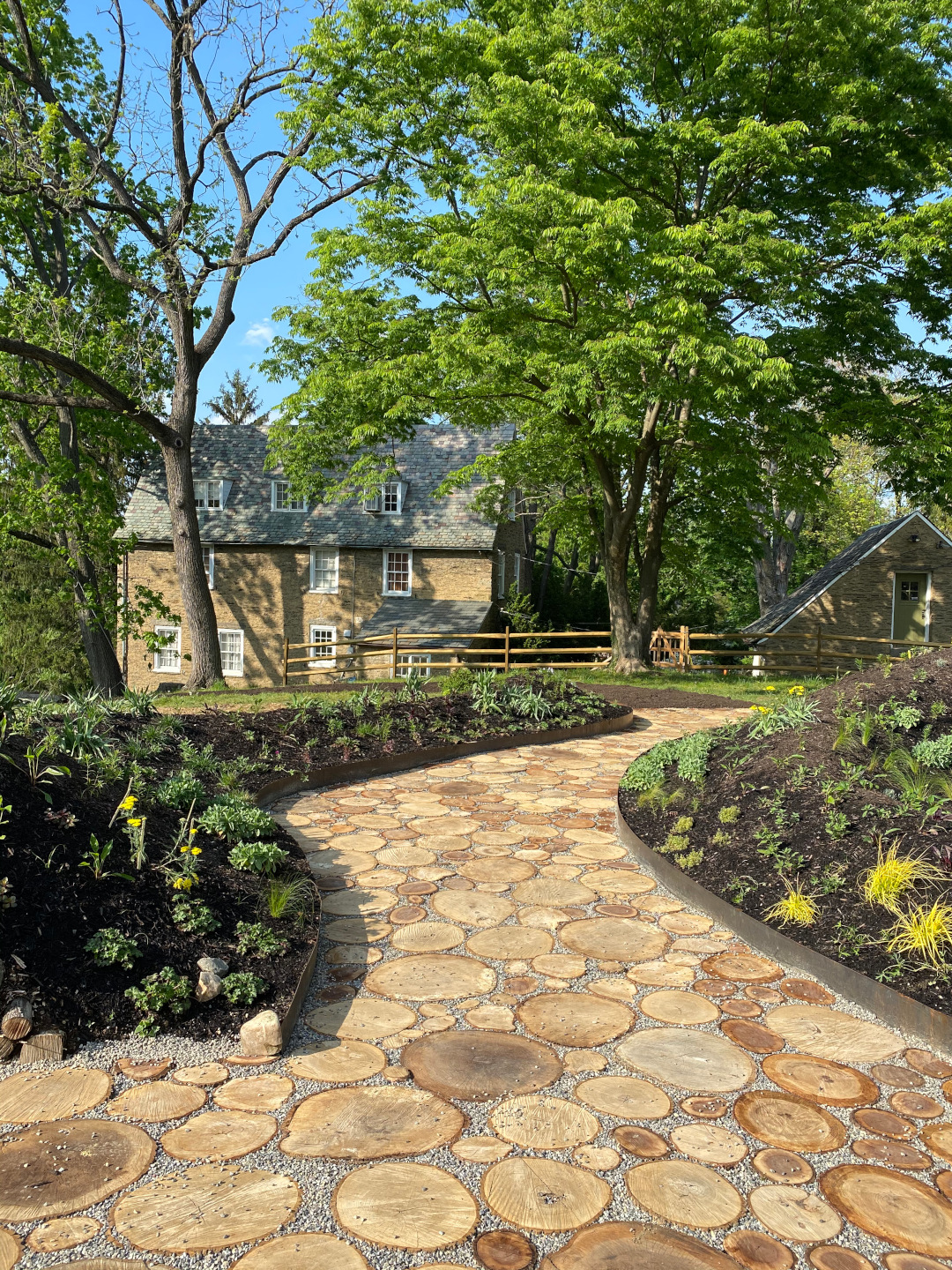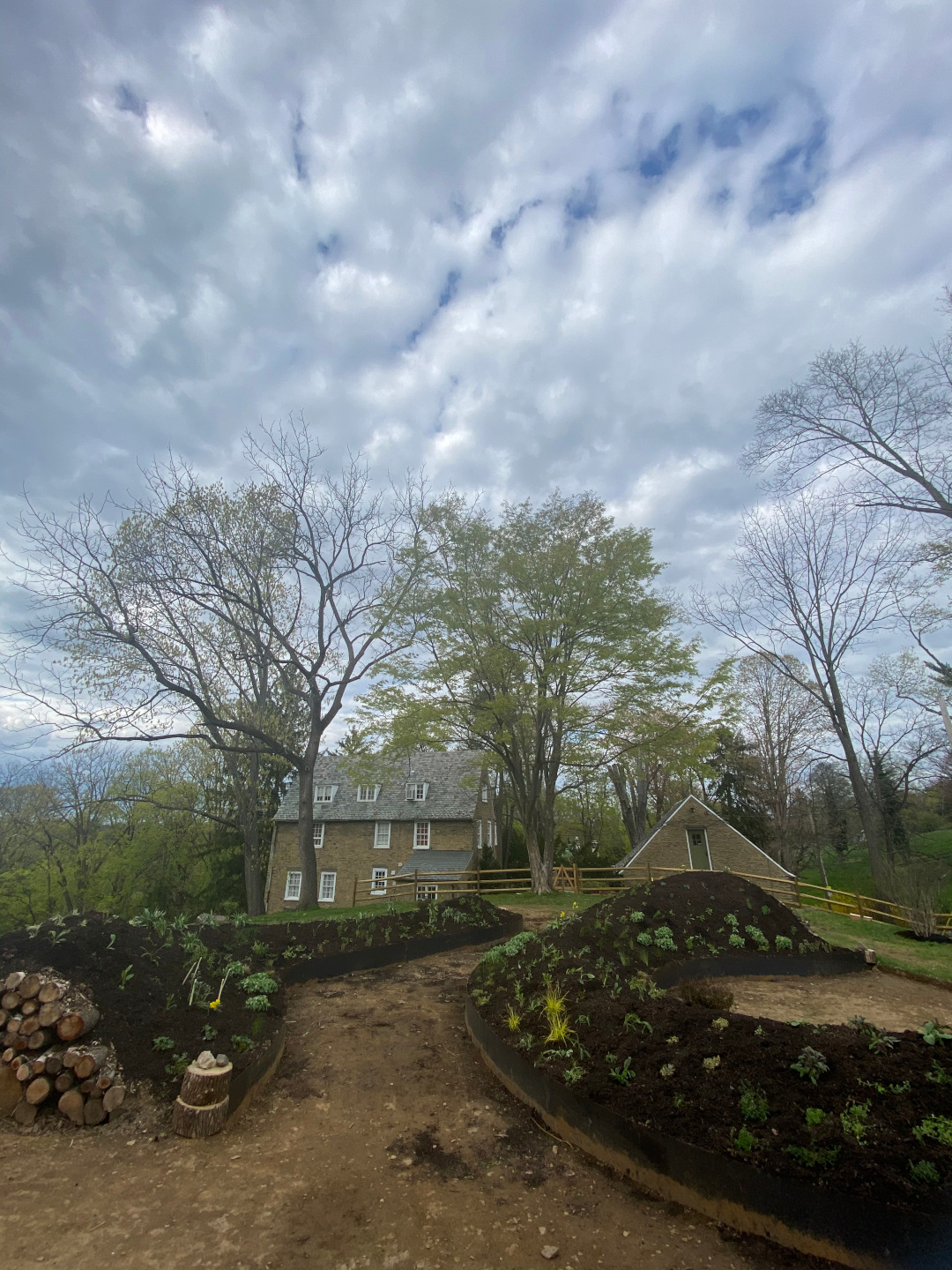My name is Syd Carpenter. I am a home gardener in Philadelphia. Two years ago the Woodmere Art Museum asked me to design a garden for their site. Along with my husband, Steve, I created two raised beds using a hugel garden as a mode of planting. Hugel is German for hill or mound. We began with a trench dug to about 24 inches, then layered it with logs, branches, leaves and well-draining soil. Plants were chosen for their three to four seasons of interest, drought tolerance, and deer resistance. We later learned that we should have included rodent resistance as well. The garden performed amazingly well that first year but was severely ravaged by voles the following winter. Apparently our hugels provided luxury accommodations for the voracious rodents. We replanted that spring with salvias, allium of all kinds, irises, grasses, lambs’ ears, and pungent herbs, all plants deer and voles supposedly find repellent. The garden has recovered beautifully.
 This picture of the hugels under construction shows how the soil is layered over the logs and branches.
This picture of the hugels under construction shows how the soil is layered over the logs and branches.
 The paths, also made from logs, provide access to the plants, which are just starting to fill in.
The paths, also made from logs, provide access to the plants, which are just starting to fill in.
 With everything filled in and covering the soil, lambs’ ears (Stachys byzantina, Zones 4–8) shows off front and center with big silvery leaves and a useful resistance to voles.
With everything filled in and covering the soil, lambs’ ears (Stachys byzantina, Zones 4–8) shows off front and center with big silvery leaves and a useful resistance to voles.
 Yarrow (Achillea hybrid, Zones 3–9) brings sunny yellow flowers and attractive fernlike foliage.
Yarrow (Achillea hybrid, Zones 3–9) brings sunny yellow flowers and attractive fernlike foliage.
The height of the mounded hugel beds helps show off the plants in the back and gives the sense of entering a tunnel of flowers.
 An exposed end shows the structure of the garden. The logs will slowly decompose, providing nutrients and allowing the bed to slowly settle. Verbena bonariensis (Zones 7–9 or as an annual) provides clouds of purple blooms.
An exposed end shows the structure of the garden. The logs will slowly decompose, providing nutrients and allowing the bed to slowly settle. Verbena bonariensis (Zones 7–9 or as an annual) provides clouds of purple blooms.
 It’s hard to believe this garden was decimated by pests! It has recovered beautifully.
It’s hard to believe this garden was decimated by pests! It has recovered beautifully.
 If you have extra logs, branches, or brush, hugel beds are a great alternative to having them hauled away, and they can provide great height and interest in the garden.
If you have extra logs, branches, or brush, hugel beds are a great alternative to having them hauled away, and they can provide great height and interest in the garden.
Have a garden you’d like to share?
Have photos to share? We’d love to see your garden, a particular collection of plants you love, or a wonderful garden you had the chance to visit!
To submit, send 5-10 photos to [email protected] along with some information about the plants in the pictures and where you took the photos. We’d love to hear where you are located, how long you’ve been gardening, successes you are proud of, failures you learned from, hopes for the future, favorite plants, or funny stories from your garden.
Have a mobile phone? Tag your photos on Facebook, Instagram or Twitter with #FineGardening!
Do you receive the GPOD by email yet? Sign up here.


